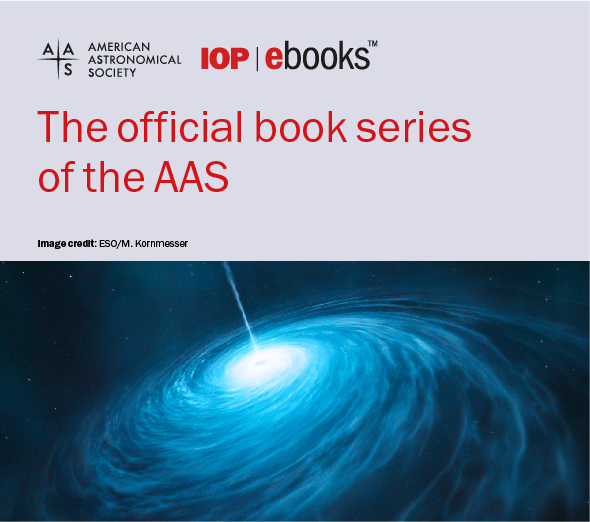A New Year for the AAS-IOP eBooks Collection
2 February 2021

Welcome to our first update of 2021. I hope this finds you well.
2020 was a year of change and difficulty for many, but I would like to reflect on some of the great ebooks that we have published and that I hope will help you with your research and teaching in 2021. I’ve also selected a few titles I’m very excited to bring to you in the months to come.
If you have an idea for a book you’d like to explore, please drop us a line. We pride ourselves on offering our authors exceptional service, speed to publication, and a smooth publishing experience — and our authors tell us we’re succeeding; see their testimonials.
Steve Kawaler
Chair, AAS–IOP Astronomy eBooks Collection
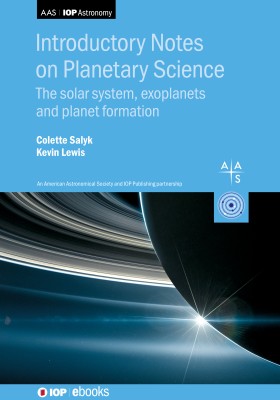 |
Introductory Notes on Planetary Science: The Solar System, Exoplanets, and Planet Formation
Colette Salyk and Kevin Lewis
Planets come in many different sizes, and with many different compositions, orbiting our Sun and countless other stars. Understanding their properties and interactions requires an understanding of a diverse set of sub-fields, including orbital and atmospheric dynamics, geology, geophysics, and chemistry. This textbook provides a physics-based tour of introductory planetary science concepts for undergraduate students majoring in astronomy, planetary science, or related fields.
FREE CHAPTER |
| Elementary Cosmology: From Aristotle’s Universe to the Big Bang and Beyond
James J. Kolata
This book presents a history of cosmology, covering the scientific developments from the time of the early Greek philosophers until the present day. It focuses on many interesting and exciting breakthroughs in understanding achieved during the late 20th and early 21st Century, and how they altered our perceptions of the origin, size, structure, and evolution of the universe. It will provide a fascinating insight to undergraduate students and any interested in astronomy and cosmology.
FREE CHAPTER |
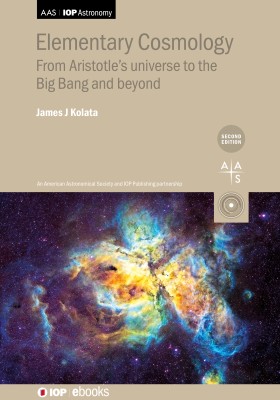 |
 |
Introduction to Stars and Planets: An Activities-Based Exploration
Alan Hirshfeld
How do astronomers know what they know about the stars and planets? That is the question behind today’s rapid pace of cosmic discovery, for every new finding rests upon a centuries-long foundation of astronomical practice. Introduction to Stars and Planets: An activities-based exploration reveals the methods by which Earthbound observers have deduced the physical attributes of celestial bodies, whether situated within our solar neighborhood or at the far ends of the galaxy.
FREE CHAPTER |
| Common Envelope Evolution
Natalia Ivanova, Stephen Justham, and Paul Ricker
Common envelope evolution is the most important phase in the lives of many significant classes of binary stars, but modeling common envelope evolution is a challenging problem. This book explains the physics of common envelope evolution and relates it to the approximations that are frequently used for modeling the onset, progression, and outcome of common envelope phases. In addition to being a specialist text on this important astrophysical process, this book provides a case study in how complex, multi-timescale astrophysical problems are approached theoretically and computationally.
FREE CHAPTER |
 |
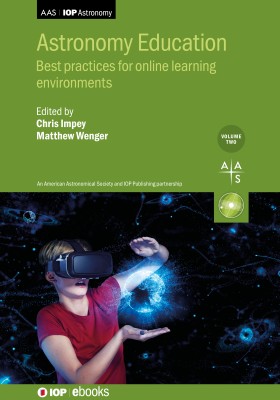 |
Astronomy Education, Volume 2: Best Practices for Online Learning Environments
Chris Impey and Matthew Wenger, Editors
This book is a practical guide for astronomy instructors who want to develop their first online course as well as those who want to add new tools to their existing courses. It explores online course design, integrating new and social media into online learning experiences, adaptive learning systems, massive open online classes (MOOCs), and the use of virtual worlds and virtual reality to teach astronomy.
FREE CHAPTER |
| Planetary Diversity: Rocky Planet Processes and Their Observational Signals
Elizabeth J. Tasker, Cayman Unterborn, Matthieu Laneuville, Yuka Fujii, Steven J. Desch, and Hilairy E. Hartnett, Editors
This book presents an exploration of the potential diversity of rocky planets through a quantitative study of how planetary processes change as properties deviate from the Earth. Changes in four specific properties are considered: the presence of a magnetic field, the production and loss of internal heat, planetary composition, and volatile abundance. This book will be of great interest to astrophysicists and planetary scientists focusing on exoplanets.
FREE CHAPTER |
 |
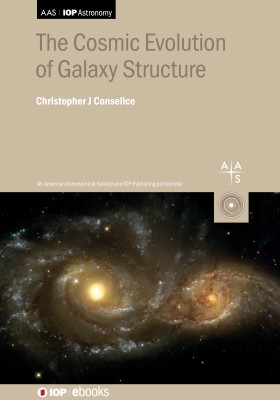 |
The Cosmic Evolution of Galaxy Structure
Christopher J. Conselice
This book explains the structural evolution of galaxies, how we measure it, how these measurements change with time, and how observing this reveals important information about galaxy formation and evolution. This includes how the general forms of galaxies change with time as well as uncovering the methods for producing structural changes, especially those involving galaxy mergers. The book also explains the future of the field through the use of machine learning tools, and how galaxy structure can be used as a new approach to measure unique features of the universe, such as cosmological properties and parameters.
FREE CHAPTER |
| Seeing the Unseen: Mount Wilson’s Role in High Angular Resolution Astronomy
Harold A. McAlister
This book tells the story of the origin of stellar interferometry and how it subsequently developed at the Mount Wilson Observatory. It covers the instruments, methods, and people involved in the advancement of high angular resolution astronomy at the Observatory, and is an excellent book for historians, astronomers, and anyone interested in Mount Wilson.
FREE CHAPTER |
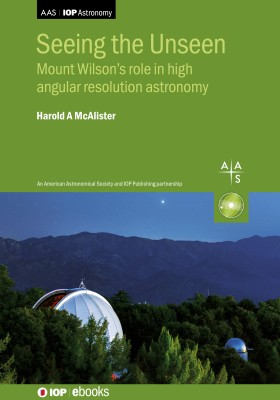 |
 |
The NASA Kepler Mission
Steve B. Howell
This book covers the numerous, paradigm changing scientific discoveries in exoplanets and other areas of astrophysics made possible by the NASA Kepler and K2 Missions. Written by the very engineers and scientists that performed the work from spacecraft design and launch through the years of space telescope observations and scientific research. In addition, the pages contain discussions, stories, and personal glimpses from the authors. It is suitable for the interested layperson, pupils of science and space missions, and advanced science students and researchers.
FREE CHAPTER |
| Foundations of Quantum Cosmology
Martin Bojowald
Quantum cosmology, an application of quantum physics to theories of the universe, has been studied for more than five decades. This is the first book to lay the physical foundations of quantum cosmology, complete with an introduction to space–time physics, quantum theory, and the main approaches to quantum gravity. It is an essential guide for researchers in quantum gravity and astrophysicists interested in fundamental aspects of cosmology.
FREE CHAPTER |
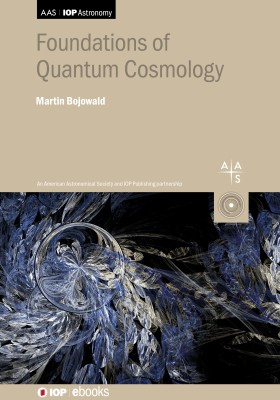 |

COMING 2021
Exofrontiers: Big Questions in Exoplanetary Science
Nikku Madhusudhan |
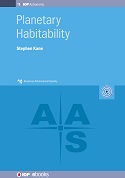
COMING 2021
Planetary Habitability
Stephen Kane |
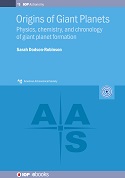
COMING 2021
Origins of Giant Planets: Physics, Chemistry, and Chronology of Giant Planet Formation
Sarah Dodson-Robinson |
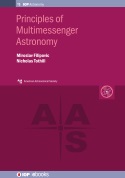
COMING 2021
Principles of Multimessenger Astronomy
Miroslav Filipovic and Nick Tothill |
Originally published by Steven Kawaler (Iowa State University) at https://aas.org/posts/news/2021/02/new-year-aas-iop-ebooks-collection


















